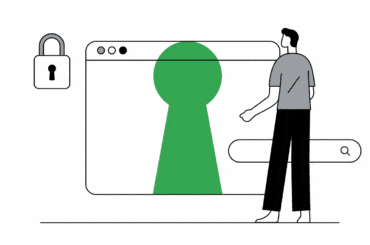A lot has been going on lately in the marketing world as new trends are setting in for online shopping, online presence, advertising, browsers, cookies, and consent, while Google has been responding to Apple’s iOS14.5 changes too with updates and revamps of their own.
With browsers changing the way they handle cookies, the inception of new regulations relevant to the industry, and rapid evolution in consumer behaviour, marketers are running too short on reliable measurements – so short, that having measurement foundations for conversional and behavioural data has become a dear challenge.
Fortunately, this is a dare out of the previously clear blue sky is applicable only to those marketers who are not updated with Google’s June 10, 2021 announcement from Google Analytics Product Management. By adopting a few simple measurement innovations brought to you by Google Analytics team, you can still get the right customer insights while preserving customer privacy and trust.
Revamped Google Analytics
Understanding customer behaviour on your website is the prime goal of using Google Analytics. You can also identify any processing issues in the user experience and a lot more.
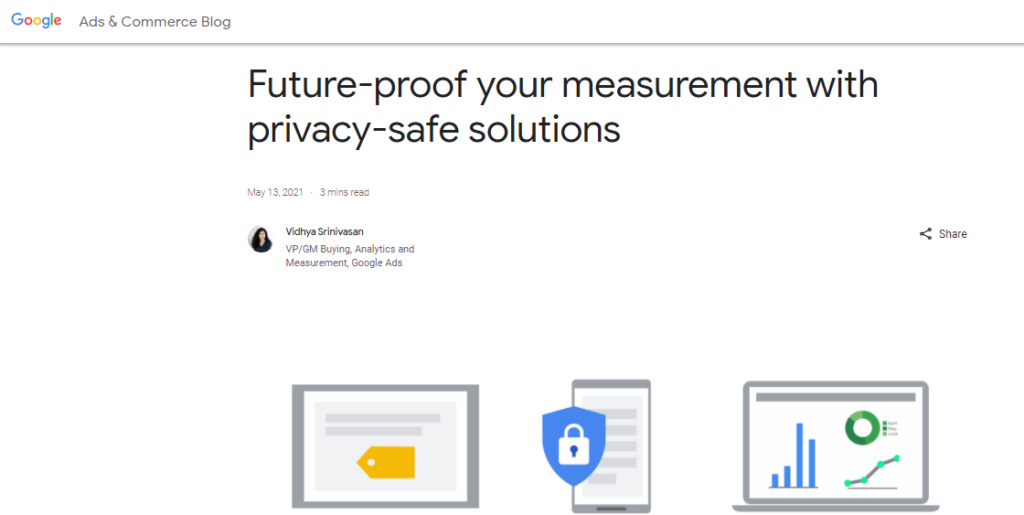
Now that Google has spruced up their vision of the Analytics experience to be more durable for the long term, you can regard user privacy and cookie consent preferences in your process of understanding the customer journey across all your platforms (web and app). This would also perk up the return-on-investment metrics (ROI) of your marketing.
Making the appropriate changes now would be the most practicable and feasible investment you might make these days for a stable privacy-centric measurement foundation for the future. Google is offering you a more sensible and future-proof measurement foundation that will keep you abreast with consumer behaviour and choices whether or not you get cookies or identifiers.
The new Google Analytics updates for Privacy-safe Customer In-sights using Machine Learning
Google had announced a few months ago that you can soon start availing yourself of Google’s Machine Learning technologies to keep optimising the performance of each element of your campaigns by modelling conversions as Google ML would. This is what Google had envisioned with the introduction of new privacy-safe solutions.

The 2021 updates rolled out from May/June will extend these models to Google Analytics for behaviour reports (modelled behaviour reporting) even where observed behavioural data are not available.
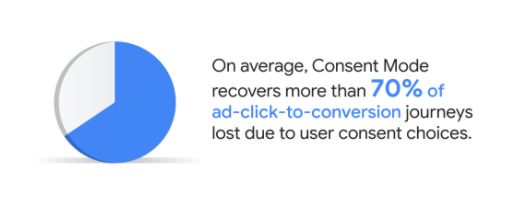
What’s more, you will start getting modelled behaviour reporting in analytics reports even if users do not consent to analytics cookies. This is because Google is extending its modelling properties to more of the reports you get in Google Analytics 4 properties.
The positively radical change that results is that you can now generate important customer insights while respecting your users’ privacy preferences – that is all you can ask for and what the core thought behind Google’s latest updates is asking you to do.
The changes we discussed will be at full blast by the end of the year, by when you will have access to better first-party data, while Google will help connect user journeys with privacy-safe identifiers as well.
Privacy-friendly Google Analytics Insights and Alternatives
Although you may be receiving mixed reviews about respecting user consent, choices, measuring conversions and behavioural data in analytics from various sources, Google assures that advertisers and brands can only benefit from the new analytics experiences as they will improve your marketing ROI in the long run – starting at the very level of advertising and attribution needs.
You will want to discover critical and relevant insights from the data available at hand, analyze it, and use it to power your advertising campaigns to make corresponding new optimisations, and relevant alternatives to developers across the globe, with which you can track all the metrics you need while respecting the privacy and consent choices of your users.
What Changes are coming up to the Advertising Workspace?
Honestly, it had always been difficult to collect relevant data from incomparable sources; all the more strenuous to understand how and where you can use the obtained data in your campaigns. When it came to studying, scaling, and comparing numerous reports, simply to understand what optimisations are working well and how you can meet your business objectives in the past, you were bound to have been knackered by the end of the day. Here are the highlights relevant to gaining privacy-safe customer insights with Google Analytics.
( i ) As of the May 2021 updates, Google has grouped together key use cases into modules to make your end-to-end workflows easier to navigate. The improved, more modular analytics is bound to enhance the advertising workspace radically.
( ii ) The all-new May advertising workspace is a single destination in the interface that is easy to navigate and designed to address the everyday needs of advertisers.
( iii ) You can overview relevant campaign and performance insights in the Advertising Snapshot report.
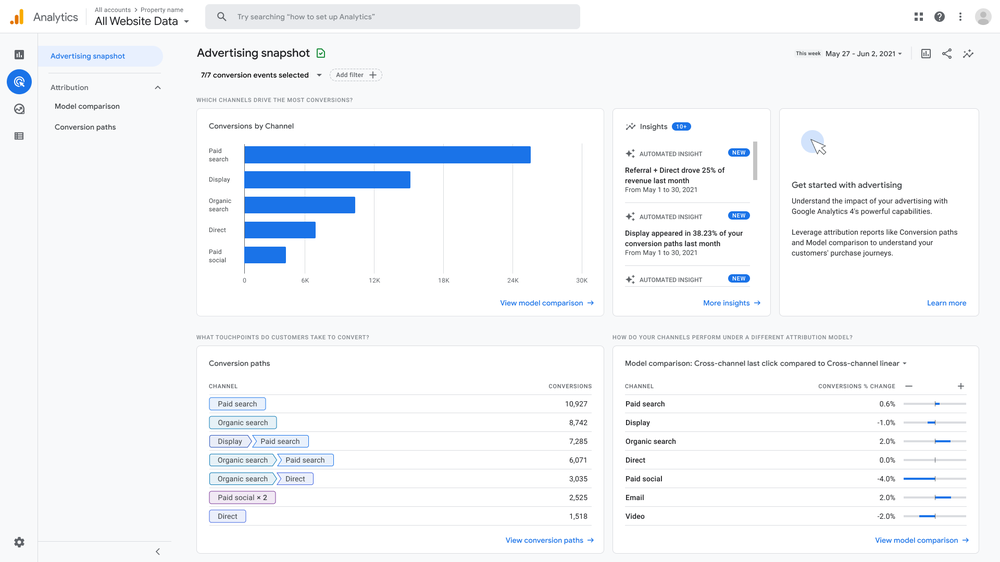
( iv ) Automated Insights will proactively notify you of the important changes in your campaigns, where the larger majority of your customers are converting from, what channel is performing the best that week, and so on. This narrow window to make optimisations will save you the time and effort that goes into studying the reports and obtaining hard-to-get insights.
( v ) You can now optimise your Google Ads campaigns through bidding or re-marketing since the better integration offered in Google Ads and Google Analytics 4 properties will enable you to use cross-device platforms and cross-device analytics.
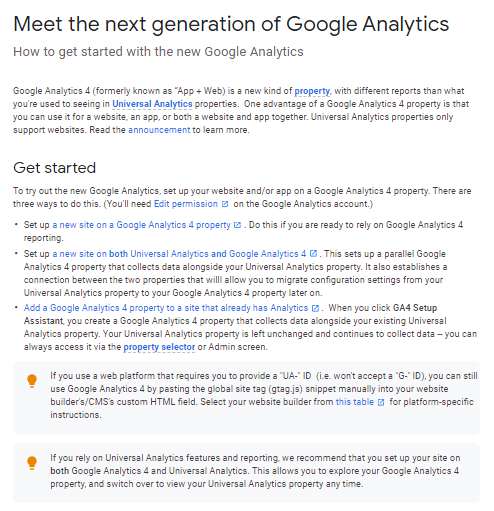
( vi ) When you export conversion data from your Google Analytics 4 properties you can select a data-driven attribution model in Google Ads to give attribution credit to each step of your marketing funnel and use it for bidding.
Attribution in the Advertising Workspace
Having attribution reporting for your campaigns is convenient and quite handy, especially if it is directly within Analytics. The May update is warranting cross-platform attribution capabilities to upgrade the Advertising Workspace.
The Google Analytics 4 properties are getting their share of upgradation too, with the data-driven attribution models. Once the update is implemented, Google Machine Learning features will give you better insights into the contribution of each touchpoint in your marketing funnel, alongside your other customer journey insights.
Let’s have a look at the two new attribution reports that are enabled as part of the mid-2021 update, and also the third one to come soon.
( 1 ) The Conversion Paths Report
Consider the Conversion paths report a double-upgraded version of the previously available multichannel funnels in Analytics. The Multi-Channel Funnels reports let you know how your marketing channels work together to create sales and conversions. The Conversion paths report allows you to see customer journey by the channel from which they arrive your site or app through their path to conversion. You can now see an all-new conversion credit by channel visualisation that utilises a multitouch attribution model within the report to help you easily understand your ROI as per channel.
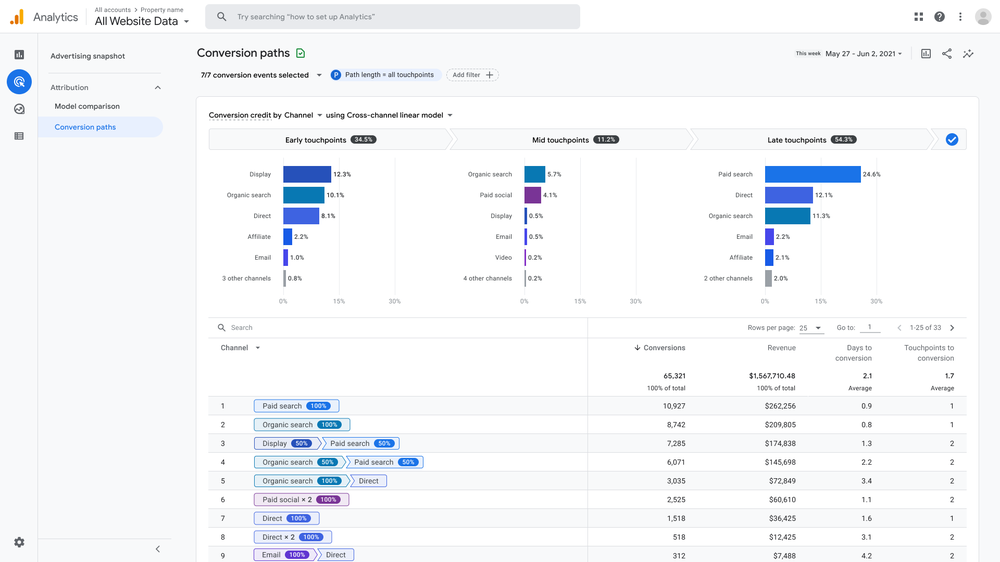
( 2 ) The Model Comparison Report
This new feature allows you to compare different campaign performances using the many existing attribution models. It will give you a better understanding as to assess how each of the attribution models and campaign performances impacts the value of your marketing channels. With this state-of-the-art knowledge source, you can determine which model best suits the needs of your business.
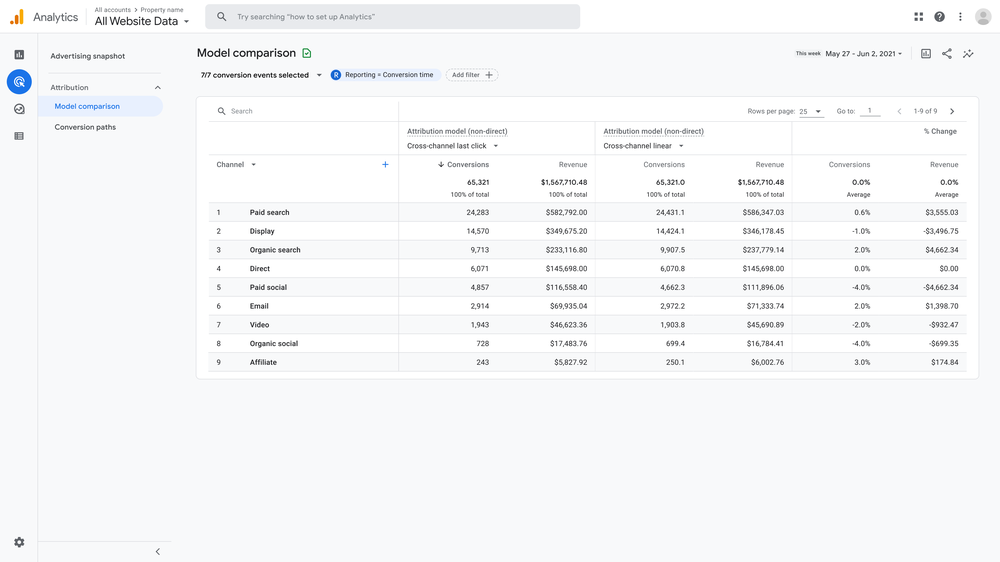
( 3 ) The soon to come Data-driven Attribution models
The soon to come Data-driven Attribution models will give Analytics a fresh coat of paint by allowing you to use Google Machine Learning to understand the contribution of each touchpoint in your marketing funnel within the Analytics UI.
Reporting Customisation
Customised Analytics experience saves your time and enhances workflow efficiency to a much larger extent. The new class of customisation options for reporting will allow the users with admin access to customise the analytics reporting experience for their brand or organisation.
You can also curate the Analytics interface for specific aspects/teams, based on their specific needs using the reports and metrics relevant to your brand. The features include an innovative, modular left navigation, custom reports and overviews (a personalised homepage is coming up too).
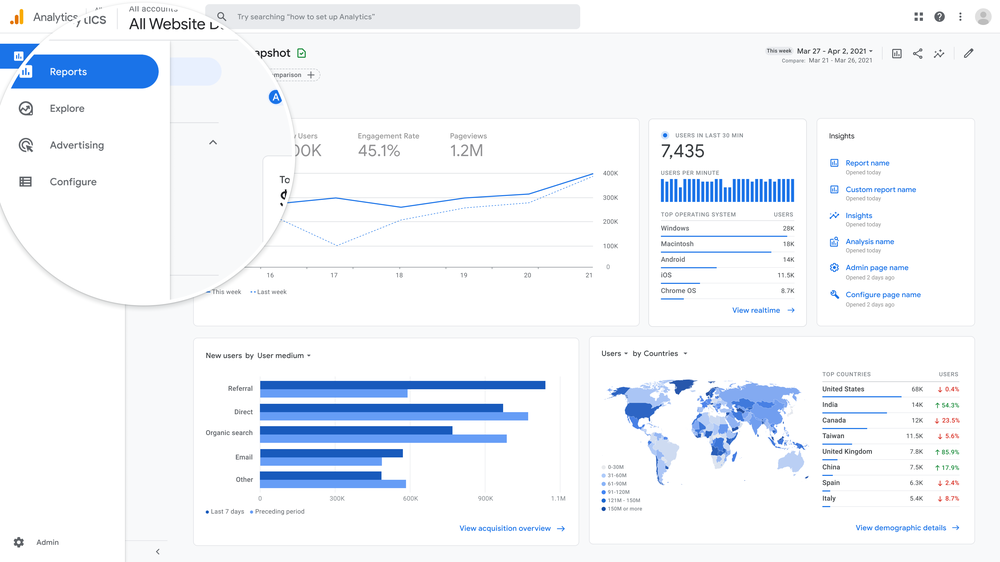
This means that it is easier for you and your teams to find what you’re looking for in the data. Google lays due stress on the intuitiveness of navigation you have always wished for.
This update also caters customised reports to anyone using the platform while bestowing customised reporting options for users with admin access.
To cut short, the updates help you to easily discover relevant insights.
Analytics 360 - a solution for Enterprises
May we add that Analytics 360 is built on the same founding vision, conviction, principles, insights, and technologies as the Google Analytics 4 properties. The platform is hence envisaged to provide even better services to larger enterprises with more elaborate and complex team structures and setups.
So, as far as we are concerned, it would be a flexible solution that can adapt to the way your team works by enabling you to customise access to data based on job functions or locations – a solution that grows with your business and allows you to process more data quickly.
Analytics 360 will be available later this year and guarantees advanced support, while the SLAs guarantee peace of mind. In short, it will let you apply the insights you get, to your media buying strategies. It is programmed to integrate with all of google’s marketing platforms including Display & Video 360, Seach Ads 360, and Campaign Manager 360 well. Google credentials suggest that it is best to use the new Analytics 360 alongside your existing accounts. This will help to build up some data history before you switch completely.
What else to do in the meantime
In addition, while Google is continuing the rollout, you can
( 1 ) depend on Custom Segments,
( 2 ) monitor Mobile Traffic,
( 3 ) focus on Site Search,
( 4 ) gather some good pointers from Bounce Rates,
( 5 ) locate top performing pages by Conversions, and
( 6 ) locate the underperforming pages.
You are good to go!
As a business owner we have had our fair share to deal with so keeping our heads above the water amidst the turbulences in the marketing ecosystem shouldn’t be as much a problem to you anymore, considering you have virtual lifejacket now to stay afloat.


